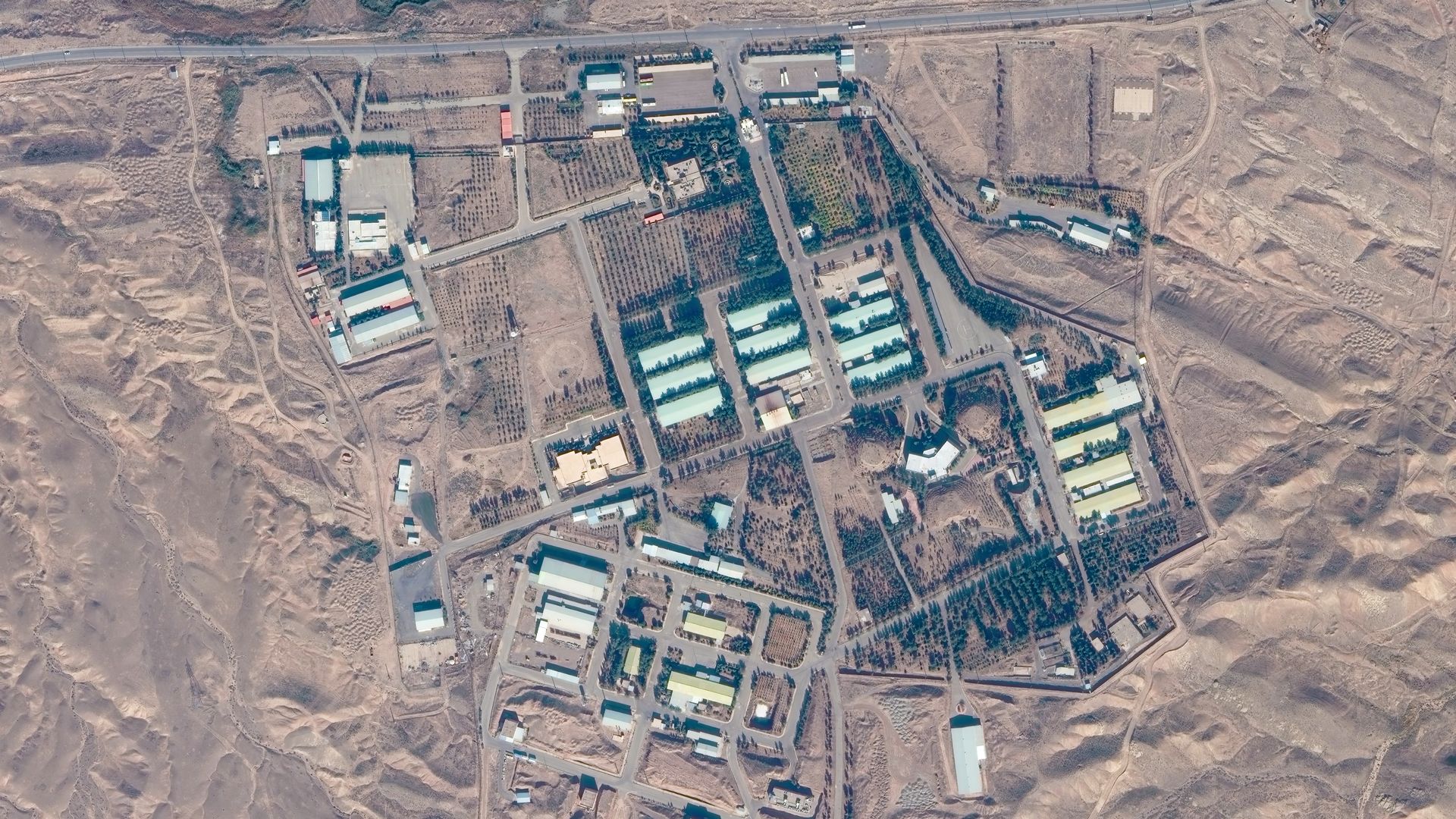
A Maxar closeup satellite imagery of the Parchin Military Complex in Iran from Nov. 2022. Photo: Satellite image (c) 2022 Maxar Technologies.
The Israeli attack on Iran in late October destroyed an active top secret nuclear weapons research facility in Parchin, according to three U.S. officials, one current Israeli official and one former Israeli official.
Why it matters: The strike — which targeted a site previously reported to be inactive — significantly damaged Iran's effort over the past year to resume nuclear weapons research, Israeli and U.S. officials said.
- One former Israeli official briefed on the strike said it destroyed sophisticated equipment used to design the plastic explosives that surround uranium in a nuclear device and are needed to detonate it.
- Iran has denied it is pursuing nuclear weapons. Iranian Foreign Minister Abbas Araghchi said in a statement last week that "Iran is not after nuclear weapons, period."
- The Iranian mission to the UN declined to comment for this story.
- The incoming Trump administration will include several key national security and foreign policy officials who are hawkish on Iran, which could lead to increased U.S. pressure on the Islamic Republic.
- The facility was part of the Iranian Amad nuclear weapons program until Iran halted its military nuclear program in 2003. It was used for testing explosives needed to set off a nuclear device, according to the Institute for Science and International Security.
- High-resolution satellite imagery acquired by the institute after the Israeli strike showed the Taleghan 2 building was completely destroyed.
- "They conducted scientific activity that could lay the ground for the production of a nuclear weapon. It was a top secret thing. A small part of the Iranian government knew about this, but most of the Iranian government didn't," a U.S. official said.
- Israeli and U.S. intelligence began detecting research activity at Parchin earlier this year, including Iranian scientists conducting computer modeling, metallurgy and explosive research that could be used for nuclear weapons.
- The U.S. hoped the warning would make the Iranians stop their nuclear activity, but they continued, the officials said.
- The Iranian nuclear weapons research even led the U.S. Director of National Intelligence (DNI) to change its assessment about the Iranian nuclear program.
- The Wall Street Journal reported in August that a DNI report to Congress didn't include a sentence that had appeared in intelligence assessments in recent years, which said Iran "is not currently undertaking the key nuclear weapons-development activities necessary to produce a testable nuclear device."
- President Biden asked Israeli Prime Minister Benjamin Netanyahu not to attack the Iranian nuclear facilities in order not to trigger a war with Iran, U.S. officials said.
- But Taleghan 2 was not part of Iran's declared nuclear program so the Iranians wouldn't be able to acknowledge the significance of the attack without admitting they violated the nuclear non-proliferation treaty.
- "The strike was a not so subtle message that the Israelis have significant insight into the Iranian system even when it comes to things that were kept top secret and known to a very small group of people in the Iranian government," a U.S. official said.
- IAEA Director General Rafael Grossi visited Iran on Wednesday and Thursday ahead of the board meeting.
- Araghchi told Grossi that Iran is willing to negotiate with the E3 — France, Germany and the UK — "on its peaceful nuclear program ... but not ready to negotiate under pressure and intimidation."
